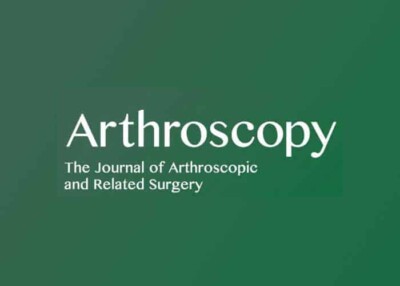
Mid-Term Outcomes of Arthroscopically-Assisted Anatomic Coracoclavicular Ligament Reconstruction Using Tendon Allograft for High-Grade Acromioclavicular Joint Dislocations
** Please Note: This article was among the five finalists in 2 categories for the following:
- Arthroscopy Journal Award for Clinical Research Excellence AND
- Arthroscopy Journal Award for Resident/Fellow Research Excellence
Authors:
Philip C. Nolte, M.D., M.A., Joseph J. Ruzbarsky, M.D., Bryant P. Elrick, M.Sc., Thomas Woolson, B.S., Kaare S. Midtgaard, M.D., Peter J. Millett, M.D., M.Sc.
Abstract:
Purpose
The purposes of this study were to assess clinical and radiographic outcomes of arthroscopically-assisted, anatomic coracoclavicular ligament reconstruction using tendon allograft (AA-ACCR) for the treatment of Rockwood type III-V injuries at minimum 2-year follow-up and to perform subgroup analyses of clinical and radiographic outcomes for acute versus chronic and type III versus type IV-V injuries.
Methods
In this retrospective study of prospectively collected data, patients who underwent primary AA-ACCR for the treatment of type III-V dislocations and had minimum 2-year follow-up were included. Preoperative and postoperative patient-reported outcome scores (PROs) were collected, including American Shoulder and Elbow Surgeons score, Single Numeric Assessment Evaluation score, Short Form–12 Physical Component Summary, Quick Disabilities of the Arm Shoulder and Hand score, and patient satisfaction. Preoperative and postoperative coracoclavicular distance (CCD) was obtained. PROs and CCD were reported for the total cohort and for the subgroups. Complication and revision rates were demonstrated.
Results
In total, 102 patients (10 women, 92 men) with a mean age of 45.0 years (range, 18-73 years) were included. There were 13 complications (12.7%) resulting in revision surgery. After exclusion of revised patients, PROs were available for 69 (77.5%). At mean follow-up of 4.7 years (range, 2.0-12.8 years), all PROs improved significantly (P < .001). Median patient satisfaction was 9.0 (interquartile range, 8.0-10.0). Median preoperative to postoperative CCD decreased significantly (P < .001). Subgroup analyses revealed significant improvements in all PROs and CCD from preoperative to postoperative for both acute and chronic, and type III and type IV-V dislocations (P < .05) with no significant differences in postoperative PROs and satisfaction between (P > .05).
Conclusion
AA-ACCR for high-grade acromioclavicular joint injuries resulted in high postoperative PROs and patient satisfaction with significant improvements from before to after surgery in those who did not undergo revision surgery. Furthermore, subgroup analyses revealed that acute and chronic, and type III and type IV-V injuries benefitted similarly from AA-ACCR.
Level of Evidence
Level IV; therapeutic case series.
